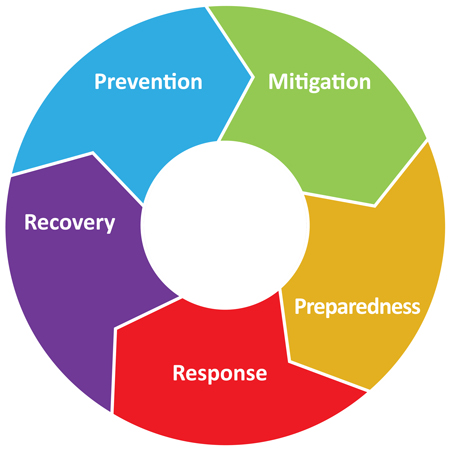Emergency Management
Prevention, mitigation, preparedness, response and recovery are the five steps of Emergency Management.

Prevention
Actions taken to avoid an incident. Stopping an incident from occurring. Deterrence operations and surveillance.
Mitigation
Refers to measures that prevent an emergency, reduce the chance of an emergency happening, or reduce the damaging effects of unavoidable emergencies.
Preparedness
Activities increase a community’s ability to respond when a disaster occurs. Typical preparedness measures include developing mutual aid agreements and memorandums of understanding, training for both response personnel and concerned community members, conducting exercises to reinforce training and test capabilities.
Response
Actions carried out immediately before, during, and immediately after a hazard impact, which are aimed at saving lives, reducing economic losses, and alleviating suffering.
Response actions may include activating our Incident Action Center, sheltering in place, evacuating threatened areas, avoiding areas and/or locking down a building/campus.
Recovery
Actions taken to return the campus community to normal or near-normal conditions, including the restoration of basic services and the repair of physical, social and economic damages. Typical recovery actions include debris cleanup, repairing key facilities, and sustained care for displaced faculty, staff and students.